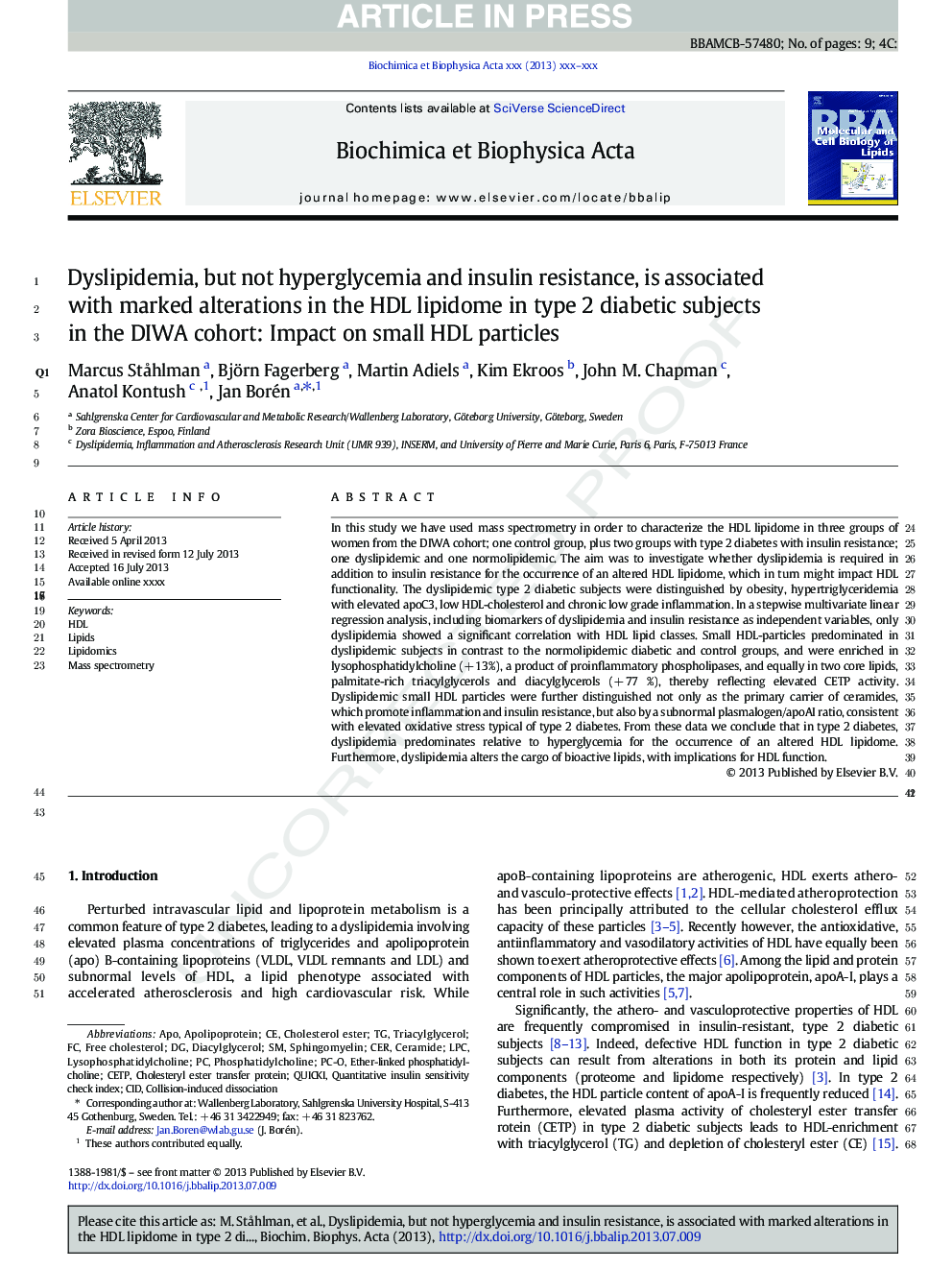| Article ID | Journal | Published Year | Pages | File Type |
|---|---|---|---|---|
| 8302458 | Biochimica et Biophysica Acta (BBA) - Molecular and Cell Biology of Lipids | 2013 | 9 Pages |
Abstract
In this study we have used mass spectrometry in order to characterize the HDL lipidome in three groups of women from the DIWA cohort; one control group, plus two groups with type 2 diabetes with insulin resistance; one dyslipidemic and one normolipidemic. The aim was to investigate whether dyslipidemia is required in addition to insulin resistance for the occurrence of an altered HDL lipidome, which in turn might impact HDL functionality. The dyslipidemic type 2 diabetic subjects were distinguished by obesity, hypertriglyceridemia with elevated apoC3, low HDL-cholesterol and chronic low grade inflammation. In a stepwise multivariate linear regression analysis, including biomarkers of dyslipidemia and insulin resistance as independent variables, only dyslipidemia showed a significant correlation with HDL lipid classes. Small HDL-particles predominated in dyslipidemic subjects in contrast to the normolipidemic diabetic and control groups, and were enriched in lysophosphatidylcholine (+Â 13%), a product of proinflammatory phospholipases, and equally in two core lipids, palmitate-rich triacylglycerols and diacylglycerols (+Â 77 %), thereby reflecting elevated CETP activity. Dyslipidemic small HDL particles were further distinguished not only as the primary carrier of ceramides, which promote inflammation and insulin resistance, but also by a subnormal plasmalogen/apoAI ratio, consistent with elevated oxidative stress typical of type 2 diabetes. From these data we conclude that in type 2 diabetes, dyslipidemia predominates relative to hyperglycemia for the occurrence of an altered HDL lipidome. Furthermore, dyslipidemia alters the cargo of bioactive lipids, with implications for HDL function.
Keywords
QUICKILPCCETPHDLCIDapoapolipoproteinCollision-induced dissociationsphingomyelintriacylglyceroldiacylglycerolCerceramidequantitative insulin sensitivity check indexMass spectrometryphosphatidylcholineLysophosphatidylcholineLipidomicscholesteryl ester transfer proteinLipidsCholesterol esterfree cholesterol
Related Topics
Life Sciences
Biochemistry, Genetics and Molecular Biology
Biochemistry
Authors
Marcus StÃ¥hlman, Björn Fagerberg, Martin Adiels, Kim Ekroos, John M. Chapman, Anatol Kontush, Jan Borén,
